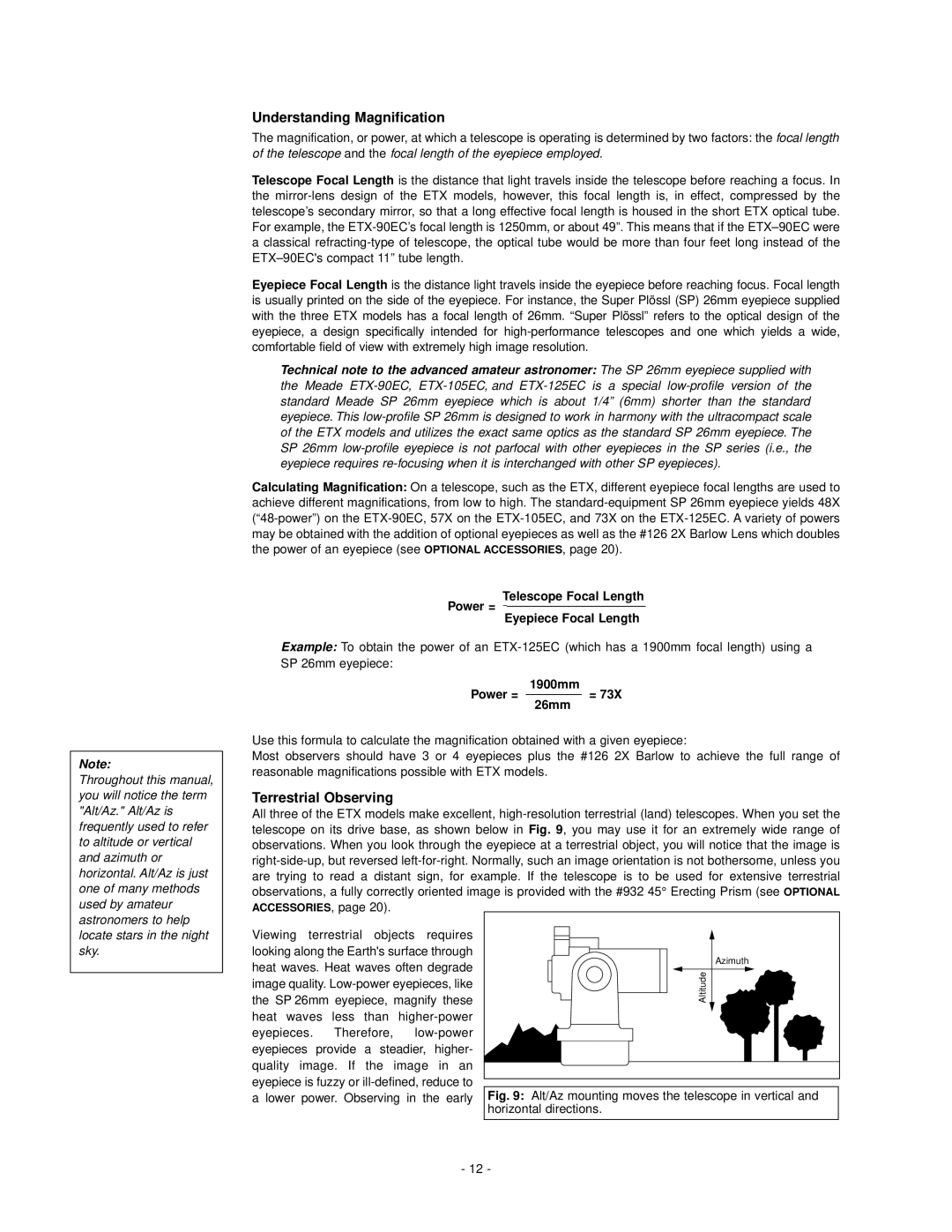
Note:
Throughout this manual, you will notice the term "Alt/Az." Alt/Az is frequently used to refer to altitude or vertical and azimuth or horizontal. Alt/Az is just one of many methods used by amateur
Understanding Magnification
The magnification, or power, at which a telescope is operating is determined by two factors: the focal length of the telescope and the focal length of the eyepiece employed.
Telescope Focal Length is the distance that light travels inside the telescope before reaching a focus. In the
Eyepiece Focal Length is the distance light travels inside the eyepiece before reaching focus. Focal length is usually printed on the side of the eyepiece. For instance, the Super Plössl (SP) 26mm eyepiece supplied with the three ETX models has a focal length of 26mm. “Super Plössl” refers to the optical design of the eyepiece, a design specifically intended for
Technical note to the advanced amateur astronomer: The SP 26mm eyepiece supplied with the Meade
Calculating Magnification: On a telescope, such as the ETX, different eyepiece focal lengths are used to achieve different magnifications, from low to high. The
Telescope Focal Length
Power = ____________________
Eyepiece Focal Length
Example: To obtain the power of an
1900mm
Power = ________ = 73X
26mm
Use this formula to calculate the magnification obtained with a given eyepiece:
Most observers should have 3 or 4 eyepieces plus the #126 2X Barlow to achieve the full range of reasonable magnifications possible with ETX models.
Terrestrial Observing
All three of the ETX models make excellent,
astronomers to help locate stars in the night sky.
Viewing terrestrial objects requires looking along the Earth's surface through heat waves. Heat waves often degrade image quality.
Azimuth |
Altitude |
Fig. 9: Alt/Az mounting moves the telescope in vertical and horizontal directions.
- 12 -
